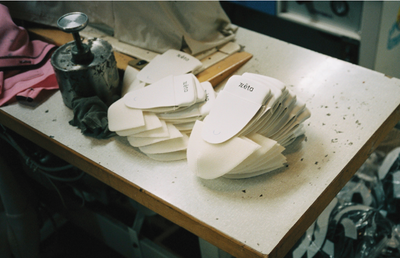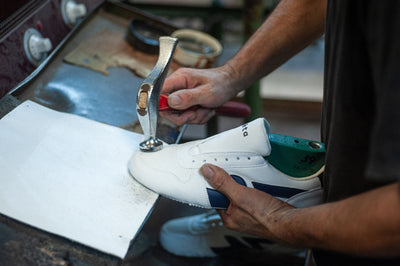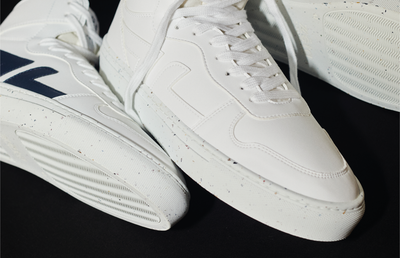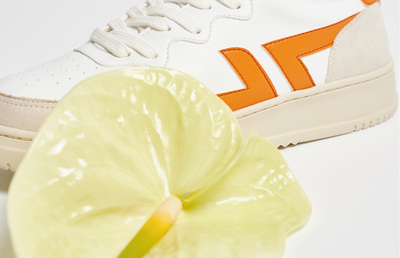Consuming grapes in all their forms
Laure Babin
Share
The fruit of the vine, from its raw form to recycled waste
Freshly picked, dry, in juice or in wine, we savor the grape in different forms, and this throughout the day. However, it is an even more precious and versatile resource than we imagine. If we told you that it can be used as fuel or as leather in the textile industry, would you believe it?
Let's dive together into the world of the vine and discover the many ways to consume grapes, from the most obvious to the most original!
Eating grapes in our daily life
Bacchus in the kitchen
6,000 years ago, grapes were already consumed in their original form. Little by little, human beings, WE, discovered the potential of this fruit. It can be appreciated in very different forms: in juice, in wine, in jam, in clusters or dry, etc. As much appreciated by pastry chefs as by starred chefs, grapes go perfectly with savory dishes such as tajine or foie gras or sweet dishes such as rum baba. It will delight the palate of sweet and savory lovers.
As a starter or dessert, for breakfast or aperitif, in red, white, yellow, pink or purple tones, the ways to savor it are endless!
If the consumption of the flesh remains the most common, the pips and the leaf also occupy a privileged place in our gastronomy. Grapeseed oil is a great alternative to other cooking oils, low in saturated fatty acids and high in unsaturated fatty acids. The vine leaf, on the other hand, is particularly used in Turkish and Greek cuisine. Once wrapped, food takes on a tart flavor as it cooks.

From grapes to cosmetics
A source of fibre, rich in antioxidants, vitamin B, potassium and iron, grapes have many nutritional benefits. Its consumption would have positive effects on the prevention of cardiovascular diseases by improving the antioxidant capacity of the blood and lowering cholesterol levels. Its virtues are also found in cosmetics. The French brand Caudalie has made vinotherapy its specialty. This company offers a wide range of cosmetic products made from grape seeds, vine shoots and vine sap. These three active substances help take care of your skin and fight against aging.
You can even adopt homemade cosmetics, made from grapes. Once in the juicer, all you have to do is mix the pulp and seeds with a spoonful of honey. You will then obtain a grainy texture perfect for an exfoliation. You will be seduced by the smell of this treatment. Don't forget to select organic grapes, it's always better!

Red wine vinegar, the star of household products
Red vinegar is obtained from the fermentation of wine. You can trust it to get rid of limescale and scale clogging your taps, coffee maker, kettle and bathtub. All you need to do is dilute a few drops in hot water, pour the liquid over the area to be cleaned and wait a few minutes. The magic happens! You will give a real boost to your interior while respecting the environment. It is an excellent alternative to chemical products whose fumes add to ambient pollution. No aerosol cans, no chlorine water pollution and above all you preserve your health by not breathing in any toxic product.
Wine vinegar is also very effective for making your dishes shine and giving a shine to your stemmed glasses and silver cutlery. It's yet another string to its bow!
Grapes and the circular economy
Grape marc, the new leather
Each year, after the harvest, the grapes are pressed to extract the liquid which will then be served in the form of juice, sparkling wine or wine. The grape marc made up of the skin, seeds and other residues is then often discarded. Such a waste ! It is actually a real treasure. A handful of entrepreneurs and individuals have stopped seeing it as waste and have understood that it represents an extremely interesting resource. At Zeta, this is how we perceive it: waste resulting from a first manufacturing process, of course, but which once reused, will become a perfectly usable material.
We are not the only ones on the market. You may have heard of Vegea in Italy? This brand recovers grain residues and grape skin to make leather that we will use on our shoes. Their leather is not only intended for the fashion sector, but also for decoration and automotive. The ambition is great and the future full of great promise for vegan leather.
Not convinced yet? However, there are only positives. As resistant and aesthetic as animal leather, this vegetable material is much more respectful of the environment and workers than the classic version.
For fans of homemade, vegetable dye, made from red grapes, reduces waste while dyeing a garment in a natural way. The pigments of these will allow you to customize any room in your wardrobe.
From the grape to the vine, an eternal renewal
Some winegrowers have also decided to recover the marc they used to throw away. This one, once deseeded, can now be used as fertilizer for the vines which will produce the next harvest. This compost improves the level of organic matter in the soil while providing mineral elements that plants love. The price-performance ratio is unbeatable. This new generation fertilizer, used on a large scale, would enable the wine sector to become one of the leaders in terms of the circular economy. Grape marc still has some great surprises in store for us. Indeed, this would make it possible to immunize plants against the attacks of several diseases by provoking a self-defense reaction. It would also have a protective photo action. This would lead to a drastic reduction in the use of pesticides in the vineyards and fields.
One vineyard, hundreds of opportunities
A huge amount of research and development work is being done to recover this waste. Some vehicles now run on bioethanol, obtained from the distillation of wine residues. Even taking into account the emissions linked to the production of this biofuel, it would represent a reduction of more than 85% in greenhouse gas emissions compared to diesel. As early as 2019, the Gard department authorized the circulation of buses using bioethanol from grape marc. Charente-Maritime, Montpellier and Bordeaux were quick to follow suit.
Researchers at an American university have recently invented a process to recycle wine waste into an ecological additive to reduce the environmental impact of road salts used to thaw the road.These are very harmful to the environment, as they damage infrastructure and contaminate water by flowing into rivers and seeping into groundwater Incorporate the grape skins, transformed into a non-toxic chemical solution with road salts would significantly reduce their use. Another proof that the circular economy is taking over the wine industry, the Nomacorc company should soon be selling corks made from grape marc.
Consumed by billions of people around the world in solid or liquid form. Emblem of French know-how. Model in terms of circular economy in a world where our environmental conscience believes. Acclaimed in gastronomy for its taste and its virtues, used in cosmetics for its anti-aging properties. What other fruit could boast such a record?
For more details, on vegetable leather, made from grape marc, discover our article on the subject: lgrape leather, what is it? -is it?
Written by Pauline Bercon
.
























































